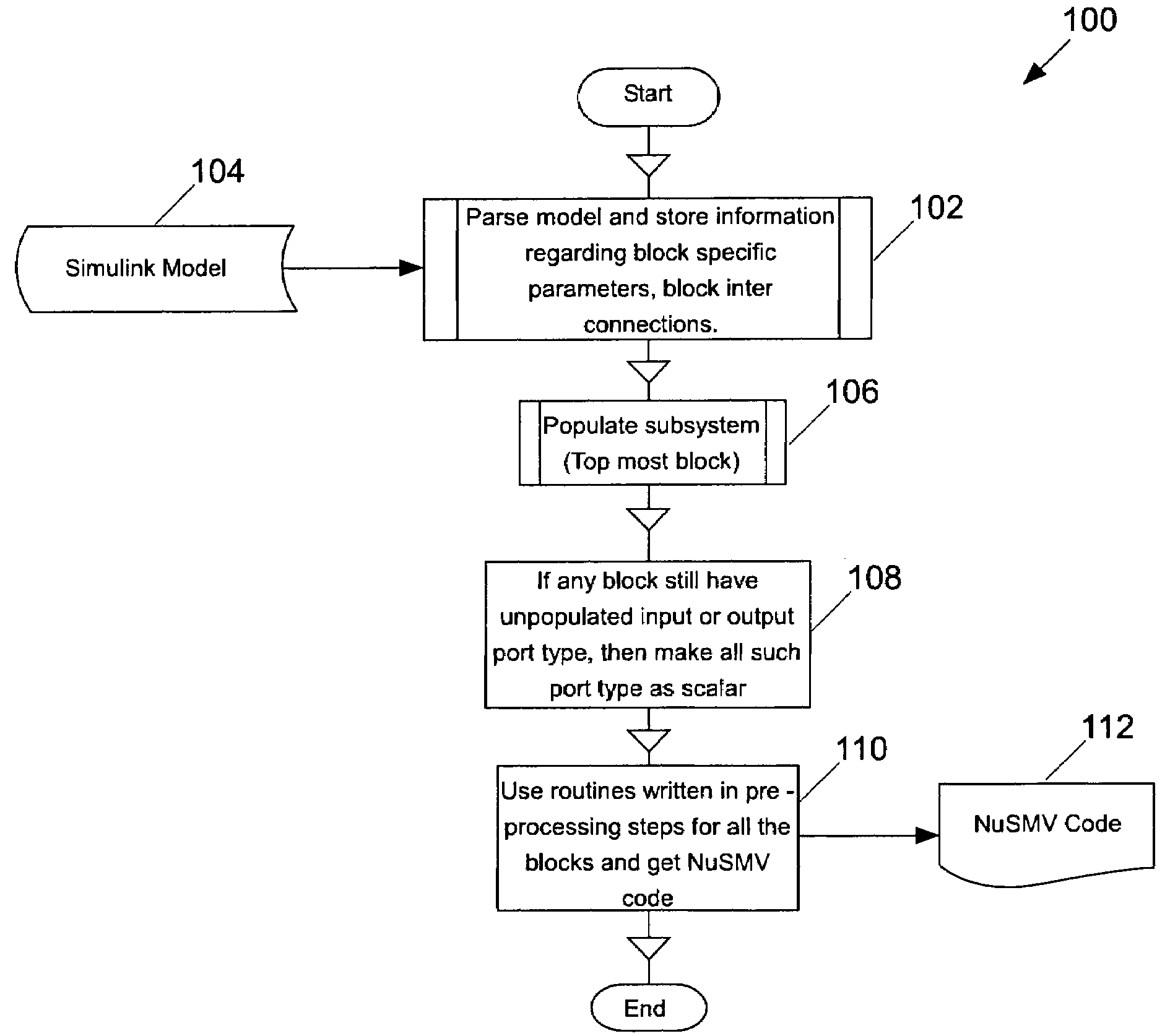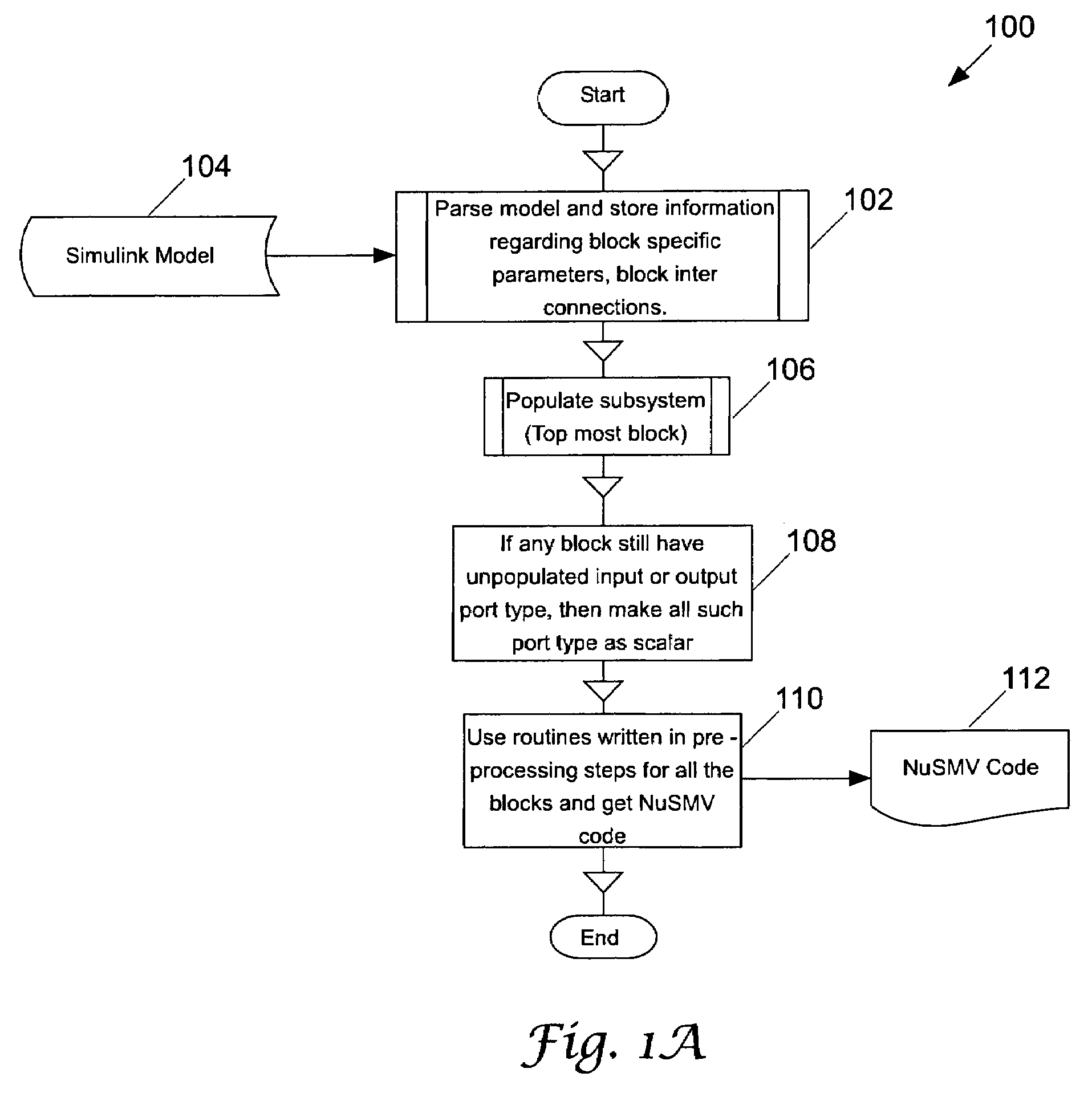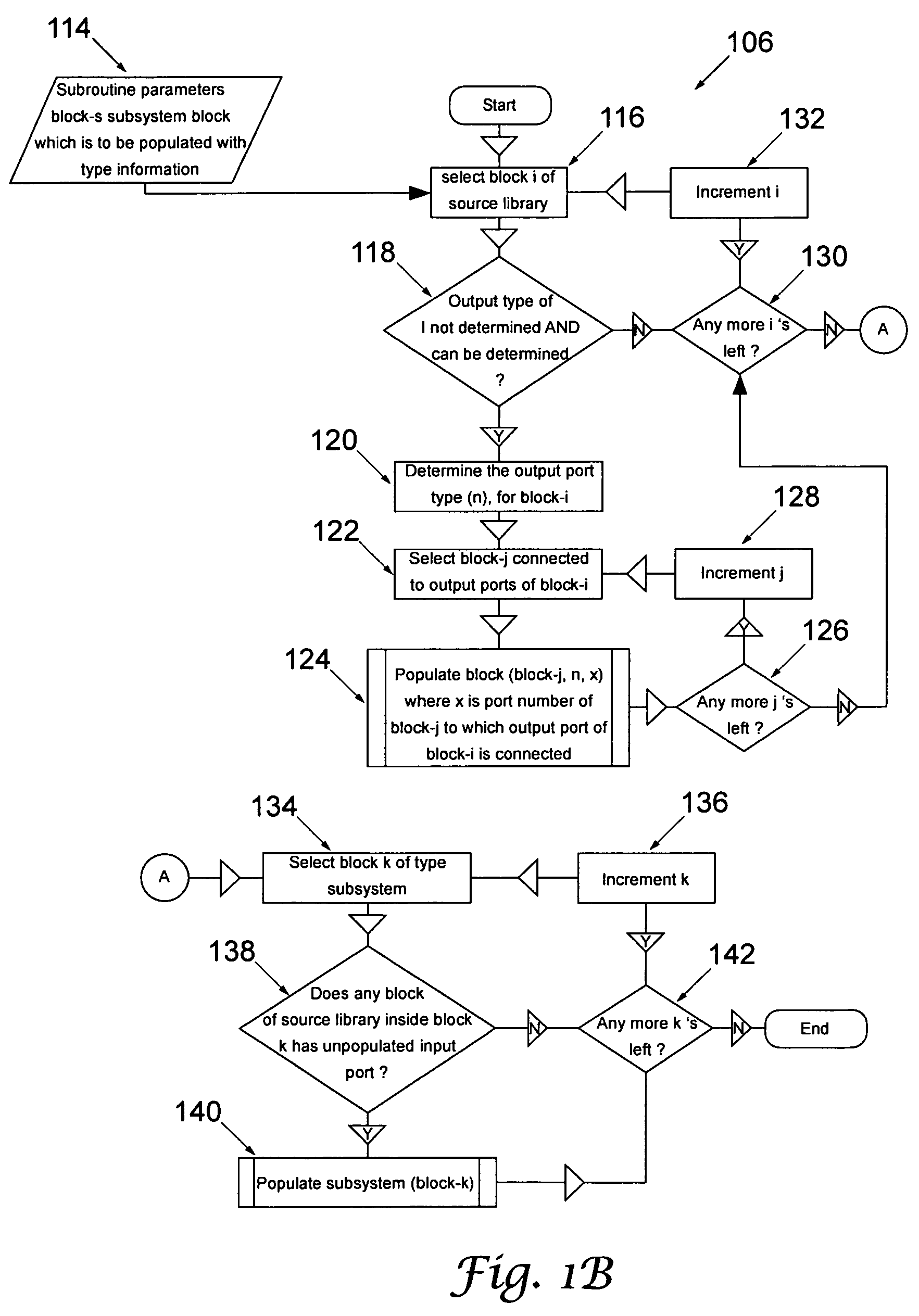Automatic translation of simulink models into the input language of a model checker
a technology of automatic translation and model checker, applied in the direction of source code creation/generation, program control, instruments, etc., can solve the problems of inability to integrate formal verification into many development processes, formal verification tools typically do not support standard design modeling notations, and extra effort to learn notations to use these tools is usually not welcom
- Summary
- Abstract
- Description
- Claims
- Application Information
AI Technical Summary
Problems solved by technology
Method used
Image
Examples
Embodiment Construction
[0027]Simulink is a computer aided design tool widely used in the aerospace industry to design, simulate, and auto code software for avionics equipment. A Simulink model of a system is a hierarchical representation of the design of the system using a set of blocks that are interconnected by lines. Each block of the Simulink model represents an elementary dynamic system that produces an output either continuously (continuous block) or at specific points in time (discrete block). The lines of the Simulink model represent connections between block inputs and block outputs. Each block of the Simulink model is an instance of a specific type of block, usually from a library provided in Simulink. These blocks are interconnected to build sub-systems which in turn can be put together to form a system model. An arrangement of sub-systems of interconnected blocks is also referred to as the control flow diagram depicting the system model. Simulink is expressive enough to model many avionics sys...
PUM
 Login to View More
Login to View More Abstract
Description
Claims
Application Information
 Login to View More
Login to View More - R&D
- Intellectual Property
- Life Sciences
- Materials
- Tech Scout
- Unparalleled Data Quality
- Higher Quality Content
- 60% Fewer Hallucinations
Browse by: Latest US Patents, China's latest patents, Technical Efficacy Thesaurus, Application Domain, Technology Topic, Popular Technical Reports.
© 2025 PatSnap. All rights reserved.Legal|Privacy policy|Modern Slavery Act Transparency Statement|Sitemap|About US| Contact US: help@patsnap.com



